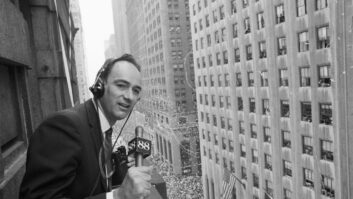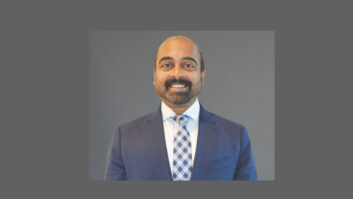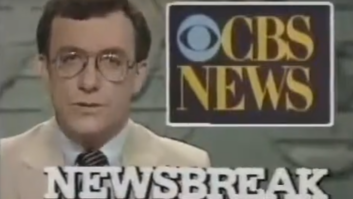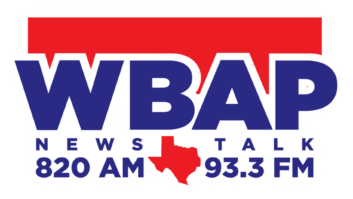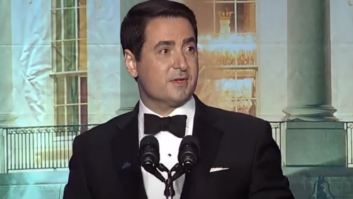
We give a great deal of attention to the NAB Show in the pages of Radio World.
The reason is simple: NAB is where a great deal of our industry news is made each year.
Radio’s leading engineers speak there about their projects and ideas. Radio’s top decision makers meet there to plan their business strategies. Radio’s regulators come, speak and take your questions there (well, some of them take questions). Radio’s best equipment makers introduce their new products.
By giving you a flavor of all of these topics over several issues, I hope to help you be better prepared to do your job throughout the coming year, especially if you couldn’t attend.
The May 4 issue features photos from the show. My thanks to Radio World’s photographers Jim Peck, Bob Kovacs and Mary Ellen Dawley, whose pix not only appear here but were published online each day during the convention. Visit RW’s website daily during the 2012 convention and you’ll see more of their work.
Next issue has our convention news wrapup. Subsequent issues feature Radio World “Cool Stuff” winners and our summer product preview/post show equipment special.
Increased SNR
I don’t love conventions, particularly in Vegas. But I enjoyed myself more at the show this year than I have in some time.
Partly that’s because the economy is better, therefore the mood is more positive among equipment shoppers and sellers who populate the show floor.
Partly it’s because I am more organized, and enjoy more good staff and freelancer support than ever in trying to cover this sprawling event in a limited amount of time.
It was a pleasure to sense a feeling of rebound, even if it is a moderate one. It was also a good convention for Radio World and NewBay Media, as evidenced by our strong staff presence and the recognition we received in the annual INKY Awards.
Radio World blogger and engineer Phil Simon wrote during the convention about the increased attendance and generally improved vibe: “The SNR has very much increased this year, especially compared to shows in the last several years. When capital projects are put on hold for too long, aging equipment and older technology have a way of getting even. Stations and groups by necessity cannot put off the inevitable.

NewBay Media took home nine of the 11 INKY Awards given in 2011 for media that cover media technology. Standing, from left: Awards creator Lauren Darr of LOI International; Lifetime Achievement Award recipient Stevan B. Dana, founder of IMAS Publishing/Radio World; Eric Trabb, accepting for “Excellent Editor (TV/USA)” Tom Butts of TV Technology; “Kick Butt Sales Rep (TV)” Vytas Urbonas; Chriss Scherer, accepting for “Unsung Behind the Scenes Hero (Radio)” Erin Shipps of Radio Magazine; Inky; “Fab Freelancer” John Bisset of Radio World; “Excellent Editor (Other Categories)” David Keene of Digital Signage; Carmel King, accepting for “Stupendous Staff Writer” James O’Neal of TV Technology and Radio World. Front: “Excellent Editor (TV/International)” Mark Hallinger of TV Technology Europe & Asia Pacific; “Unsung Behind the Scenes Hero (TV)” Caroline Freeland; “Excellent Editor (Radio)” Paul McLane of Radio World.
“Many need to be buying replacement transmitters, antennas and studio gear,” he continued, echoing a theme I heard too. “Many of the folks with the big console and transmission equipment booths as well as the smaller accessory vendors are feeling a welcome change in attitude. Station decision makers are more willing to be writing orders this year. And that’s a good thing for the industry and our audiences.”
You can read Phil’s review of convention themes, including his own list of hot products and his thoughts about daunting challenges facing AM HD Radio, at radioworld.com in the Blog box.
Phil was very upbeat about the show attendance. My take is somewhat more moderate; while show traffic was certainly good the first day or two, I didn’t see the crush on the radio floor all week that I recall from the 1980s and early 1990s. But even though I find it hard to believe the show drew almost 93,000 people, as NAB estimated, I’d go along with its report of a 5 percent increase this year.
You’ll also find show thoughts on our blog page from Radio World Engineering Extra Technical Editor Michael LeClair. Michael was particularly pungent about the speech by FCC Chairman Julius Genachowski. (“Mr. Genachowski is clearly brilliant and a pleasant enough speaker. I would not want to debate him. He has already studied everything and knows all the facts and answers. He will even tell you why your arguments are worthless. Before you have a chance to state them.”)
Michael also wrote, “I had one exhibitor tell me this was their best show ever. It’s a welcome change from the last two NAB’s which at times had a grim feeling to them. Our industry is beginning to swing back from a down cycle and the good feelings are contagious.
“Need more proof? Here’s my informal Happy Hour metric to consider. Starting around 5 p.m. every day, various exhibitors roll out ice barrels filled with cold beer. Trays of tasty appetizers soon follow. While most affairs are for invitees, no one is taking names and if I were so inclined I could make a pretty good bar crawl, winding my way from the South Halls and back to the Hilton — where I would find a line of models giving away free shots of aged scotch. Not to mention a number of hospitality booths in full swing by early evening. Shades of NAB past? I think so, and I’ll raise my glass in a toast to that.”
Themes
Bandwidth was a big topic — who has it; who wants it; whether there’s enough of it to the car or mobile devices to threaten the business model of traditional broadcasters. Industry leaders speculate about where the FCC will go with its idea of voluntary spectrum auctions and how market tension between broadcasters and wireless companies will play out.
Radio is not directly involved with that right now; but any broadcaster needs to pay attention to this overarching theme because what happens to TV spectrum can happen to radio too.
Emergency alerting was on a lot of minds, for reasons obvious to anyone who must meet the CAP compliance deadline later this year. Vendors told me that although some stations have installed new gear (a quarter to a third of all stations, by various estimates), others — including several large groups — have yet to commit to a specific hardware solution.
It’ll be interesting to see whether the EAS supply chain can support a rush of last-minute orders, and whether the FCC will extend the deadline for stations that have ordered gear. (I predict “yes” to both questions but suggest you not wait til the last minute regardless.)
Another theme: Engineers at Cumulus and Citadel are wondering how the pending acquisition of Citadel will affect them; but execs find it hard to answer those questions even in private, because they’re constrained from even talking to one another at upper levels until the acquisition is finalized.
On the product floor, equipment makers continue to reflect economic realities by offering more budget-savvy solutions.
Simpler and more affordable offerings proliferate, particularly in consoles, FM transmitters and antennas, studio cabinetry and automation. We also continue to see a profusion of apps for controlling broadcast gear.
Meanwhile, managers of automation vendors whispered intensely among themselves about a current patent claim involving music on hard drive technology — one that could end up costing broadcasters money. Others scoffed, calling the claim specious.
And more products are coming out to help radio stations produce and stream video — pushing us further toward that time when all of us — magazines, radio, TV, social media, Facebook users — are all simply “multimedia content providers.”
You’ll read more about these topics in RW’s coverage in the current and subsequent issues.





